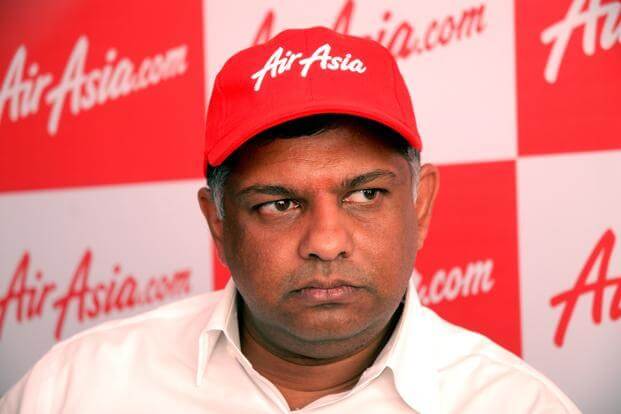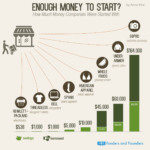The concept of a low cost airline was started in the seventies by the American domestic carrier Southwest with the sole objective of offering cheap airfares to the consumers. This created a situation where already established flag ship carriers or legacy airlines to lose a significant amount of the market share to these newly formed low cost airlines, purely because of their ability to charge a lower price over traditional full cost airlines.
North America
From the deregulation in the 1970’s till the early 2000’s the transformation of the low cost concept in the United States can only be described as a series of innovations, proliferations and consolidations where many other low cost airlines (e.g. Pacific Southwest, New York Air, Jet America) entered the market of which, some survived the competition and others did not. This also caused some of the major carriers to start their own subsidiaries under the low cost banner in order to regain their lost market share (Francis, Humphreys, Ison & Aicken, 2005, p. 85).
Europe
In Europe the low cost concept was originated in the UK and Ireland based on the Southwest model with the introduction of easyJet and Ryanair in 1995. Their success was attributed to the favourable economic framework that encouraged the low cost airline industry. For example, the deregulation allowed airlines of member states to operate domestically within the European Union. Another Example is low charges at underused airports which increased the passenger numbers going into those airports and finally, their direct sales approach using the internet and call centres (Francis et al, 2005, p.87).
Australia/ New Zealand
After the deregulation of the Australian domestic market in the early nineties, airlines such as Compass Airlines and compass Mk II started low cost operations. However they were absorbed into the Qantas group as a result of the financial strength Qantas had over the low cost airline. The only significant low cost innovation came in the form of virgin blue which still continues to operate today.
In New Zealand, although the deregulation movement was implemented in 1984, low cost operations did not start until 1995. However, unlike most other countries it wasn’t in the domestic sector but short haul trans-Tasman flights, started by Kiwi Airlines. The response for this by the New Zealand flag ship carrier Air New Zealand, was to create their own subsidiary Freedom Air to gain a market share in the low cost airline sector. Unfortunately, this creation of Freedom Air combined with the pressure from Qantas drove Kiwi Airlines out of the market. However, “Deregulation within New Zealand has meant that new entrants and particularly large airlines with substantial capital are seeing New Zealand as an attractive market to enter and are viewing the domestic and Trans-Tasman routes as possible revenue earners” (Francis et al, 2005, p.89). Today, an offshoot of low cost carrier Virgin Blue operates Trans-Tasman routes under the banner Pacific Blue.
Asia
In Asia, it was always thought that the tight government control and restrictions implemented will not allow favourable conditions for low cost airlines to prosper. However the rapid demographic and economic progress combined with congested hub airports alongside underutilised airports and the need for governments of those countries to promote tourism and trade outside the capital cities influenced in the bringing the low cost concept to the continent of Asia. Seeing the success of some of the European airlines such as easyJet and Ryanair, Malaysian carrier Air Asia started low cost domestic operations in 2001 based on the South West model. Other subsidiary airlines such as Tiger Airways and ValuAir have also started operations and are still in service today (Francis et al, 2005, p.90).
The Low Cost Model
The above mentioned examples in the low cost airline history share one common feature. They are either based on or have used a ‘modified’ version of the Southwest low cost model of operation.
The success of low cost airlines can be attributed to what is called a low-cost leadership position strategy adopted by these airlines. According to Flouris & Oswald (2006), “The goal of a low-cost leader is to contain the costs to the lowest relative to industry rivals and, in essence, to create a sustainable cost advantage over the competition. The key to this strategy is that cost is not equal to price”. The original low cost model is designed based on this concept and as outlined in Alamdari & Fagan (2005, p.378), the original South West low cost model consisted of the following:
- Fares : Unrestricted and low price
- Network: Point to point high frequency routes
- Distribution: Travel agents and call centres, no tickets
- Fleet: High utilisation, same type of aircraft across the fleet
- Airport: Secondary airports with short turnaround times
- Sector length: Short (around 400nm)
- Staff: High productivity with competitive wages and profit sharing
The Current State of the Low Cost Airline Industry
Many of the low cost airlines all around the world initially based their strategy on the South West’s model. However, as the number of Low Cost Airlines (LCAs) increased over time, more and more of these airlines have deviated or ‘modified’ this model in order to survive in the industry due to competition.
Current Service Structure
The basis of operation of low cost airlines still remain the same, which is to provide the lowest price for the consumers by undercutting the price levels of legacy carriers. But because there are a number of airlines competing with each other some LCAs have modified their strategy in order to try and stand out from their competition. This strategy is known as differentiation strategy (Alamdari & Fagan, 2005, p. 378). This is when a company tries to offer something unique to make them stand out from the rest of the industry. The philosophy behind this being that if a company can differentiate their product in some dimension that the customers value and at the same time sustain this differentiation they will be an above average performer in the industry.
This differentiation strategy is evident in mature markets such as the United States where they seem to have gone for a balance between low cost model and the full service model. According to Alamdari & Fagan (2005) almost all the low cost airlines in north America now offer some kind of frequent flyer programme, some have started complementary drinks, in-flight entertainment and different class systems as well (e.g. JetBlue).
In the European Market, airlines such easyJet and Ryanair follow the more traditional cost leadership strategy when it comes to the basic services offered. However this is not to say that they haven’t entirely stepped out of the original strategy. Traditionally low cost airlines have been based out of and operated into secondary airports. This is not completely the case anymore with Ryan air and easyJet operating into hubs such as Paris Charles de Gaulle, Amsterdam, Geneva International, Dublin, Gatwick and Manchester to name a few. This type of traffic movement can also be seen in the United States with Southwest operating out of Los Angeles International (offering 115 departures from LAX) and even offering connecting flights to their other destinations similar to that of a legacy carrier.
The Current Effectiveness and Efficiency of the Low Cost Airlines
The idea behind the low cost airline concept revolves around cutting costs in order to be able to give the consumers a low price product with the bare essentials. There are several ways that the LCAs of today tackle this
Distribution:
Since the introduction of internet ticket booking by South West in 1996, almost all the airlines have followed the trend of either cutting out or severely limiting the involvement of travel agents to distribute their products. Almost half of the ticket sales are now done online and in some case such as easyJet, Ryan Air and Air Asia over 80% percent of their ticket sales are done online. “Internet selling is undoubtedly the biggest advance and most significant operating cost saver the industry has experienced over the past decade. Distribution costs, on average, can account for as much as 17% of an airline’s total operating costs” (Alamdari & Fagan, 2005, p. 383).
Fleet Standardisation and Fleet utilisation:
Having the same type of aircraft can have a significant reduction in training and maintenance costs and also increases efficiency by giving greater flexibility for the aircraft crew. Fleet utilisation is a direct measure of efficiency and this can be almost 80% higher than legacy carriers. This high utilisation rates are achieved by quick turnarounds at the airport therefore increasing the number of sectors each aircraft can operate.
Sector Length:
Low cost airlines also mostly fly short haul routes (less than 4 hours) therefore several sectors can be done in a given day.
Human resources:
There is also significant reduction in labour cost in Low Cost Airlines as aspects such as ground handling can be outsourced to other companies. Likewise independent contractors already in the aviation industry get hired and therefore less training is required. According to a study done by Hunter (2006, p. 319) regarding low cost airline business model and employment relations, “Management in LCCs seems to have created a special ‘company atmosphere’ by emphasising the ‘us against the others’ mentality, so that loyalty is built to the employer. Paternalistic methods are employed to support loyalty and to some extent ‘underdog’ community spirit. More detailed case study evidence exists on this for airlines such as Southwest, JetBlue, easyJet, etc.” This suggests that although low cost airline employees get paid less than their legacy counterparts, their camaraderie and their organisational culture may influences in a more efficient operation.
The Future of Low Cost Airlines
Adapting to changes
The move away from the original low cost model and adopting strategies that are new by current low cost airlines around the globe are direct results of deregulation and freedom of operation and their effects will depend on how mature the low cost market is. In the United States there are clear signs that the well established low cost airlines such as JetBlue and Southwest are adapting the differentiation strategy which is a move to drive out any new low cost entrants to the market. This will also affect the legacy carriers and their subsidiaries because although these subsidiaries adopt the low cost model, as long as the parent company cannot keep their labour costs down, it is unlikely that that the subsidiaries will succeed in driving out the low cost airlines.
Even in Europe, although it hasn’t quite reached the level of the United States, the making of bases in hubs instead of secondary airports across Europe by Ryan air and easyJet is an indicator that these airlines are also preparing to drive out any new entrants into the market especially given that the EU is now considered to be a single aviation area where domestic low cost airlines can start to operate and compete with each other. The operation out of and into hubs from secondary airports is also an indicator that there is a demand from people to travel from hubs to secondary airports and vice versa and that this is a move in the right direction to the ever changing aviation environment.
In upcoming markets such as Asia, it will take a few more years before the low cost market reaches maturity due to the restrictive nature of governments involved. However, the emergence of LCAs such as Air Asia and the subsequent implementation of subsidiaries such as Tiger Airways is a clear sign that Asia is also heading towards the low cost revolution. Recently Air Asia started operating to Australia and has plans to operate to Europe as a long haul low cost operator. The airline also implemented a strategy of including a premium class for their long haul flights. This is clearly a move away from the more tradition model of low cost airlines to a more differentiate model. The key difference in the Asian Low cost market is that most airline including the two major low cost airlines operating in the region are backed by their corresponding government or got an influx of cash to enter the market inorder to encourage tourism and travel in the region which essentially is good however, tight regulations by the government and the barriers to entry will not fully allow other independent players to step in without approval first.
Possible Future Outcomes of the Low Cost Airline Industry
A Delphi study conducted by Alamdari & Mason (2007) predicting future trends of EU network carriers, low cost carriers and consumer behaviour, set out to test the following scenarios:
1. The larger European network airlines will dominate the market through mergers and acquisitions
2. Smaller network carriers will need to find a niche market or risk being driven out or absorbed by the dominant network airlines.
3. The short haul operations into hubs will be fed to dominant airlines by franchised feeder services and partners
4. Business class travellers will put higher value on long haul business class flights.
5. Short haul business class will disappear as most short haul business travellers will not be willing to pay for it.
6. Increase in technology (i.e. web conferencing etc) will require the need for the business traveller to travel less
7. Long haul leisure travel will grow more than short haul leisure travel
8. Leisure trips will become shorter.
The discussions by the Delphi group based on the scenarios above came to the following conclusions regarding the possible future of both network and low cost airlines:
- The difficulty network carriers experience with regards to short haul routes will result in them concentrating on long haul routes and short haul routes will potentially be serviced by their partner airlines or low cost airlines.
- Over half of the intra EU traffic will be serviced by low cost airlines. This is mainly because of the above reason of network airline not making profits servicing short haul routes. The Delphi group also predicted that short haul business travel will disappear as less and less people will be willing to pay for short haul business and would rather save money and travel on low cost airlines.
- The Group also predicts that in the future there large network airlines will consolidate through mergers and alliances and there will only be a small number (in the range of 3-5) large network airlines that will concentrate on long haul travel.
- As above the number of low cost airlines will also decrease through acquisitions and mergers and will be left with a small number of very extensive low cost airlines. However, they did not agree that the surviving low cost airlines and will code share or make interlining arrangement to extend their network as there are not slots available at hubs and the fact that low cost airlines like to fly into secondary airports.
- Lastly the group could not come to agreements whether low cost airlines will enable connection facilities to passengers.
written by Mishma Hameed of Aviation Knowledge. see more.





























